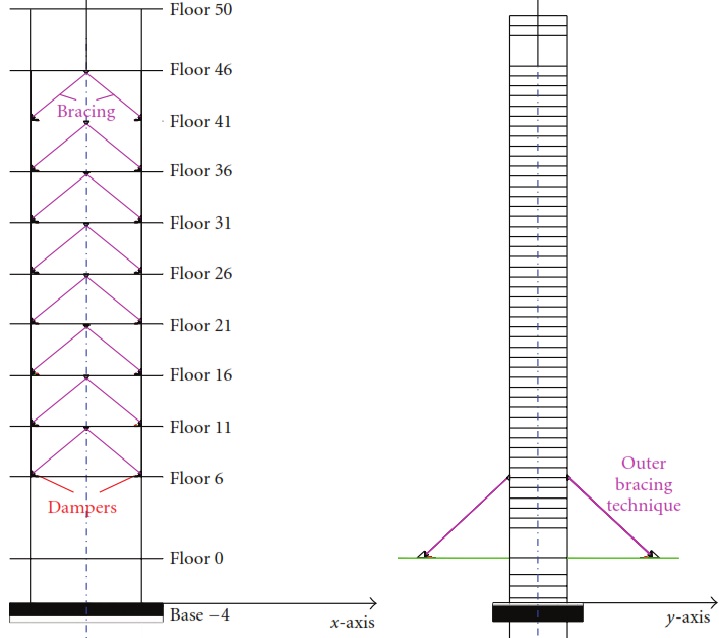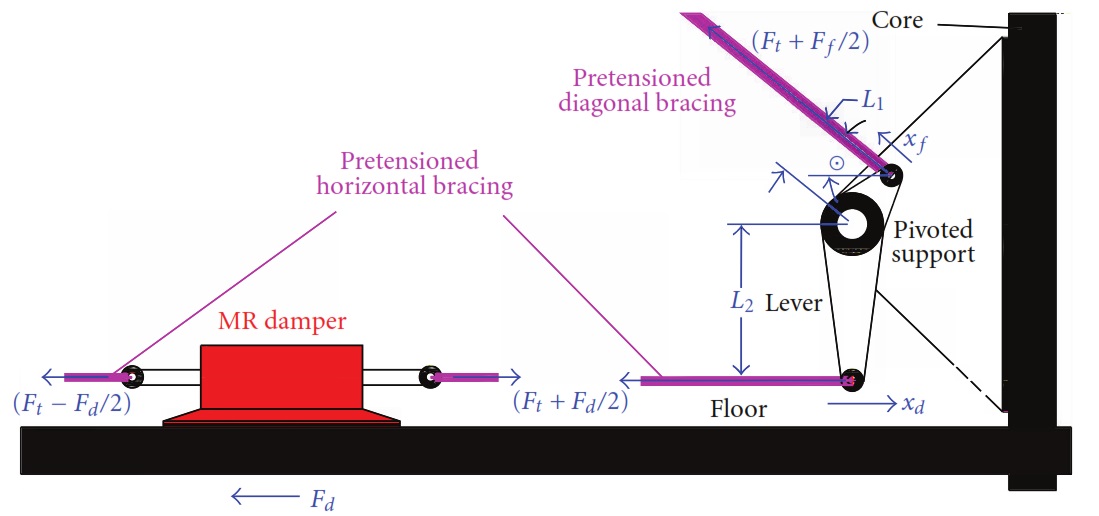🧲 Magnetorheological (MR) Dampers: Advancing Smart Structural Control
Structural control is instrumental in enhancing the safety and effectiveness of civil infrastructure systems, from high-rise buildings to bridges, by mitigating the effects of multi-hazard environmental forces (earthquakes, wind). Magnetorheological (MR) dampers are key semi-active control devices that have garnered renewed interest due to their low-power requirements, controllable nature, and crucial fail-safe properties. The WISE Research Lab focuses on optimizing the performance of these devices to ensure maximum resilience and structural longevity.
Optimization of MR Damper Performance
MR dampers offer exceptional controllability, allowing researchers to achieve diverse control objectives—such as reducing floor displacements, inter-story drifts, and absolute accelerations—through various algorithms. However, optimizing their placement and function within complex systems requires sophisticated analysis.
Innovative Design and Implementation
- Vibration Response Dichotomy: Our research demonstrates that the shear response and the flexural response of buildings present two distinct cases for vibration suppression.
- Bracing-Lever Mechanisms: To address this dichotomy and ensure optimal damper function even when inter-story drift is insufficient, we propose novel bracing-lever mechanism configurations for the dampers. These arrangements facilitate the application of flexural response to achieve superior vibration mitigation.
Integrating MR Dampers with Probabilistic Methods
Evaluating the efficacy of smart dampers in complex Multiple-Degree-of-Freedom (MDOF) dynamic systems remains a time-consuming challenge, which hinders the reliable design and tuning of controllers. We integrate MR damper application with our advanced analytical tools to solve this issue.
Accelerated Performance-Based Tuning
- Probabilistic Approach: We utilize a novel probabilistic approach that enables the analytical solution of highly nonlinear control systems. This method significantly reduces computational effort compared to current simulation methods, making it invaluable for reliable design and performance evaluation in MDOF systems (e.g., multistory buildings and wind turbines).
- Performance-Based Control: This developed control theory enables the use of accelerated performance-based semi-active controller tuning. This is a strategic advancement that drives the creation of smart, resilient, and sustainable structures capable of withstanding multiple hazards.
By combining MR dampers, advanced control algorithms, and probabilistic approaches, our research aims to revolutionize structural control and elevate the standard of infrastructure resilience.


Selected Publications
- Aly, A.M. (2025) "Effects of Bracing Stiffness and Viscoelastic Damping on Enhancing Vibration Control in Buildings," ASCE-ASME Journal of Risk and Uncertainty in Engineering Systems, Part A: Civil Engineering, 11, 2. https://doi.org/10.1061/AJRUA6.RUENG-1450
- Rezaee, M., Aly, A.M. (2019), "Proposed Theory of Semiactive Gains for Smart Dampers in MDOF Systems," Journal of Structural Engineering, ASCE, 145(12). DOI: 10.1061/(ASCE)ST.1943-541X.0002453
- Rezaee, M., Aly, A.M. (2018), "Vibration Control in Wind Turbines to Achieve Desired System-Level Performance under Single and Multiple Hazard Loadings," Structural Control and Health Monitoring, 25(12), e2261. DOI:10.1002/stc.2261
- Aly, A.M. (2016), "The Use of Bracing Systems with MR Dampers in Super Tall Buildings", International Journal of High-Rise Buildings (IJHRB), 5(1), 31-41.
- Aly, A.M., (2015), "Control of wind-induced motion in high-rise buildings with hybrid TM/MR dampers", Wind and Structures, 21(5), 565-595.
- Aly, A.M. "Vibration Control of Buildings Using Magnetorheological Damper: A New Control Algorithm," Journal of Engineering, Volume 2013, Article ID 596078, 10 pages, 2013. DOI: http://dx.doi.org/10.1155/2013/596078